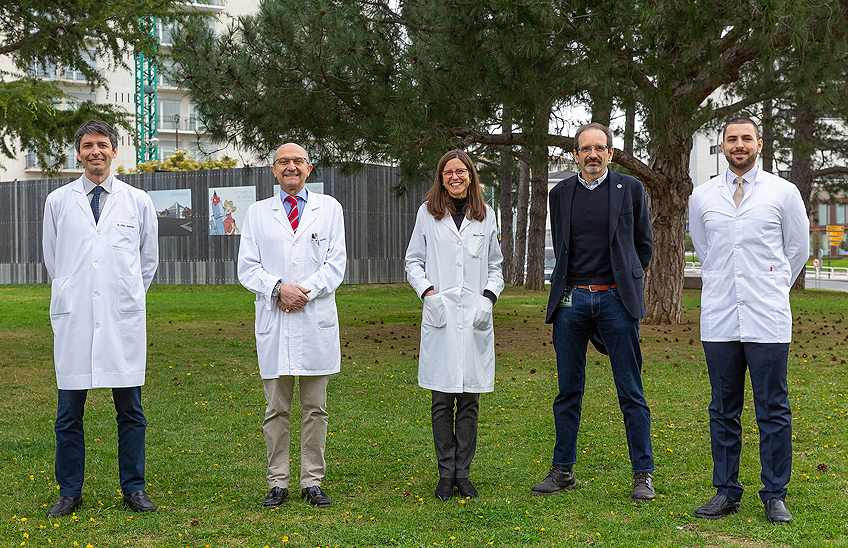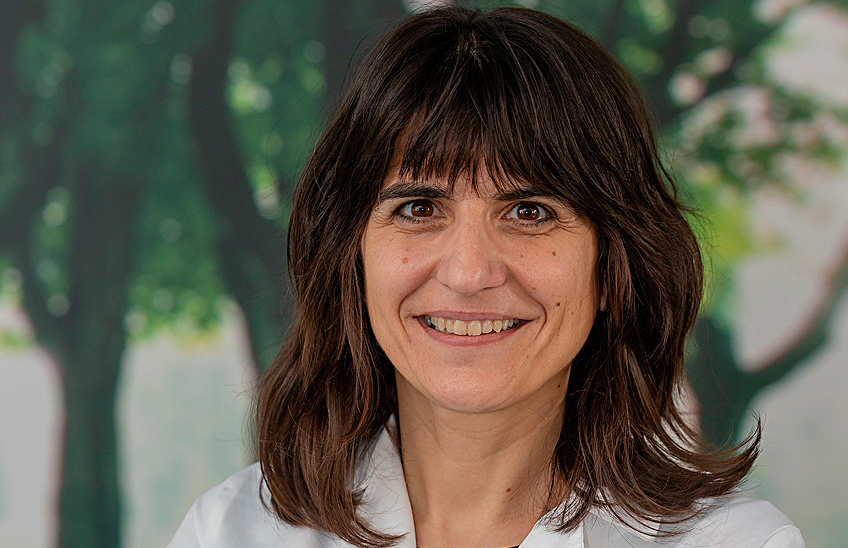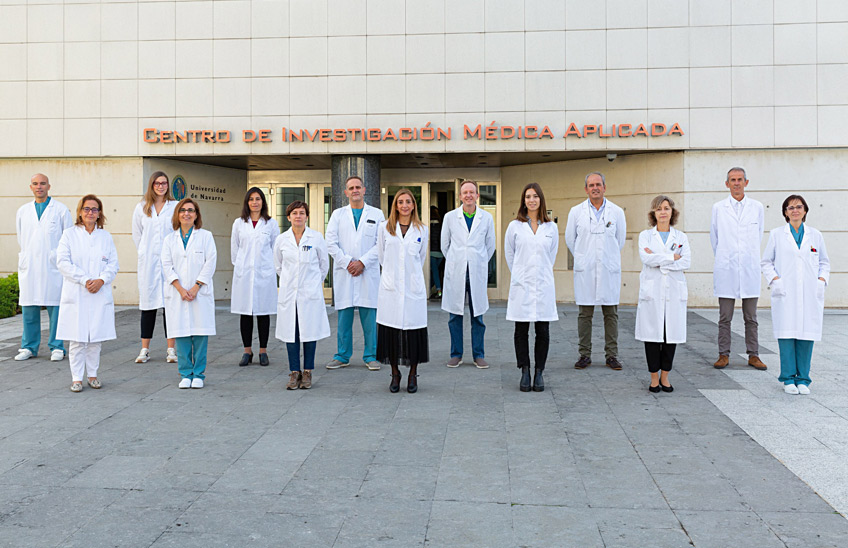A study confirms that the University's strategic plan against Covid achieved low fees infection rates in its campus
Keeping the university open, with 100% attendance, did not mean an increase in the incidence average with respect to the population of reference letter in its Pamplona, San Sebastian and Madrid campuses.

PhotoManuelCastells/From left to right, researchers Alejandro Fernández-Montero, Miguel Ángel Martínez-González, Silvia Carlos, Arturo Ariño and Fares Amer.
31 | 03 | 2022
The American journal AJPH (American Journal of Public Health) has published a scientific article signed by researchers from the University of Navarra which concludes that the academic centre's strategic plan to tackle Covid and guarantee a safe return to campus achieved low fees infection rates. Specifically, the cumulative incidence at 14 days in its three campus (Pamplona, San Sebastian and Madrid) was 415.2 compared to 447.7 for average in these three provinces. Likewise, only 3% of the total number of infections occurred at the University's facilities.
The authors of the study are Mario Gil-Conesa, Fares Amer, Silvia Carlos and Miguel Ángel Martínez-González, from department at Preventive Medicine and Public Health; Arturo Ariño, director scientist at the Science Museum; and Alejandro Fernández-Montero, doctor at Health & Safety Office.
Between 24 August 2020 and 30 May 2021, a cohort study was conducted with a nine-month follow-up at the University of Navarra, in a population of 14,496 people, including students and employees, belonging to three campus: Navarra (84.9%), Gipuzkoa (11.1%) and Madrid (4.1%). The publication describes how in the 20/21 academic year the University implemented the Prepara2 plan to guarantee a safe return to the university campus and to prevent outbreaks of Covid within the university community, thus supporting face-to-face attendance and avoiding the closure of the University.
This strategic plan was accompanied by a prevention plan, which also included an early diagnosis programme, as well as early detection and contact tracing. In addition, spaces were adapted, compliance with prevention measures was ensured, mass PCR testing was carried out, and attendance health care was guaranteed through area COVID to the entire university population.
Prior to the start of the course, all members of the University received a quotation for a test PCR and weekly random testing was carried out on a representative sample throughout the course. A 24-hour medical care centre, area Covid, was also set up to ensure early diagnosis and detection, as well as case monitoring and tracking. In total, 34,848 PCR tests were carried out (2.4 per person), with a positivity average of test of 3.5 per cent. This percentage remained below 5%, the threshold established by the World Health Organisation to consider Covid transmission controlled in a population, and below the percentage in the Spanish population (11.6%) and in Navarre (8.8%).
The publication explains that this intervention shares many of its measures with the safe campus programmes of other international universities, such as Berkeley and Duke, where mass testing and compliance with individual prevention measures reduced the fees infection rates. model The article also concludes that a containment plan such as the one implemented by the University of Navarra "can serve as an example for other institutions in the future, in similar contexts".




